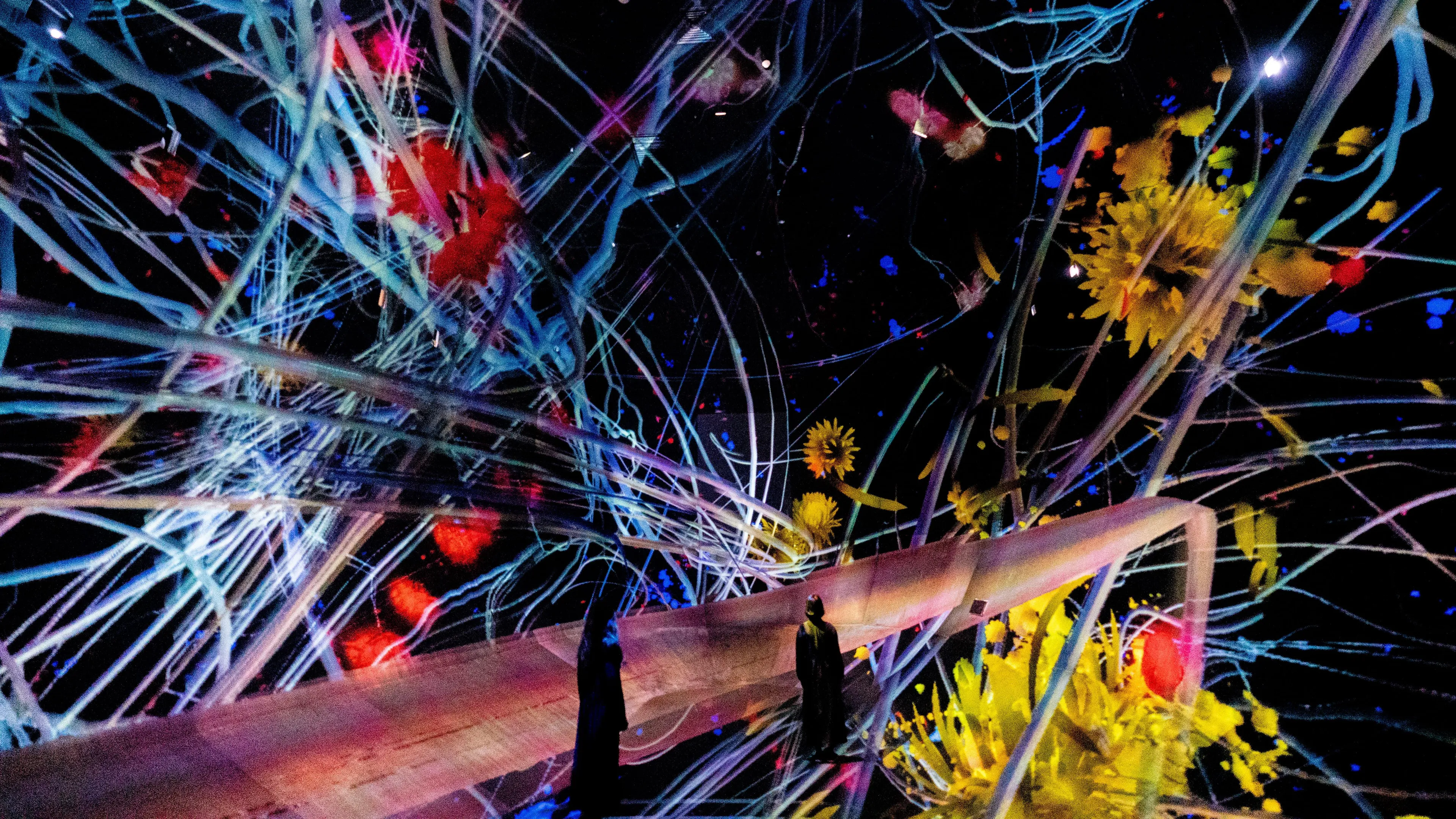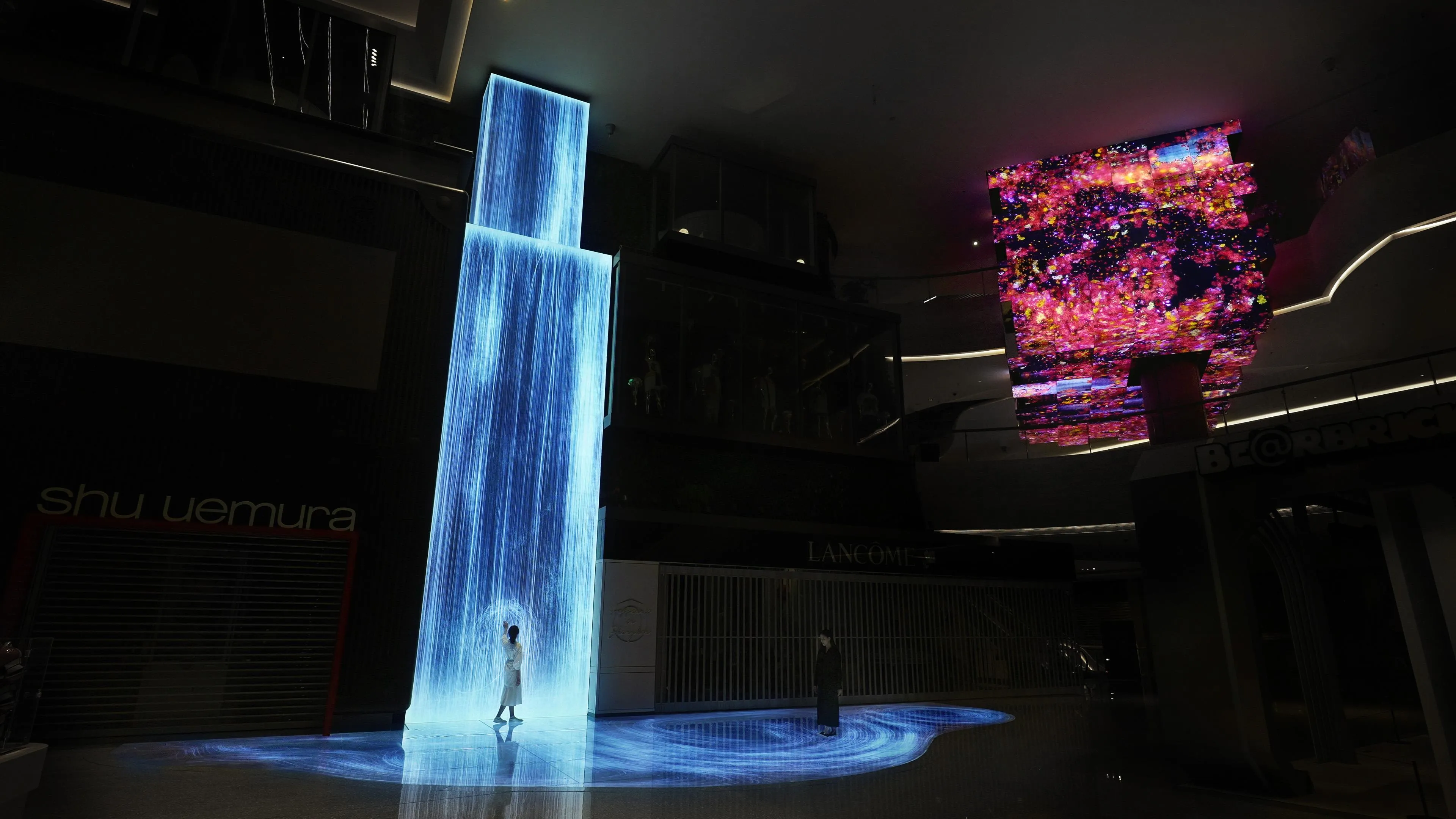Massless Clouds Between Sculpture and Life
This floating, immense sculpture emerges from a sea of bubbles, transcending the very concept of mass. It neither sinks to the ground nor rises completely to the ceiling, but instead drifts in the middle of the space. The contours of its existence are ambiguous—it fragments into smaller pieces, but merges into a larger mass. Even when people fully immerse themselves in this sculpture, its existence remains intact. If broken by people, it naturally restores itself. However, when the sculpture is destroyed beyond what it can repair, it collapses, unable to recover. Even if people try to move or push this floating sculpture, they cannot do so, and if they stir up wind, the sculpture disperses entirely. Physical human actions cannot move the sculpture.
Objects such as stones and man-made creations maintain a stable structure on their own. A stone will continue to exist even if placed in a sealed box, isolated from the external world.On the other hand, a vortex created in the ocean disappears instantly when transferred into an enclosed box. In other words, a vortex does not maintain a stable structure independently. A vortex exists within the flow created by its environment formed by water continuously flowing from the outside to the inside and from the inside to the outside, maintained by the vortex’s ordered structure. This flow allows the vortex to shift as the surrounding currents change. Its boundaries are ambiguous. There is no material distinction between the vortex and its surroundings as they are made of water.
Rather than a solid object, this sculpture is created by the order of energy generated by the phenomena of a unique environment. Let us call this existence created by the order of energy, a "Higher Order Sculpture." The artwork is inseparable from the environment and changes along with the environment. It transcends the conventional notions of physical objects—it sustains its existence mid-air, having ambiguous boundaries, and it is able to maintain its shape even when people immerse themselves physically into the sculpture, naturally restoring itself even if the sculpture breaks.
The only material substances present in this space are water, air, and ordinary soap.By filling the space with bubbles, a distinct environment is created in which an order of energy is born. By doing so, a massive form emerges from this sea of bubbles that floats steadily in mid-air.
In modern biology, the definition of life cannot be strictly defined, but everything that is structured upon cells, capable of metabolism, and self-reproduction are labeled living things for convenience. In other words, all living things are composed of cells. All cells are enclosed by a cell membrane constructed of a lipid bilayer, with the hydrophilic part facing outward and the hydrophobic part covered within the layers. Both the inside and outside of the enveloping membrane are liquid. Soap bubbles are similarly enveloped by lipid bilayer membranes, and these membranes are structurally identical to cell membranes. However, contrary to cells, the bilayer of the bubble membrane floats in and encloses air, so the hydrophobic part faces outward, while the hydrophilic part is covered within the layers. In other words, if we consider cells to be pouch-shaped membranes in liquid, then bubbles are pouch-shaped membranes in air. This sculpture is created from substances composed in the same ways as cells, the structuring units of life-forms, and the order of energy created from this environment.
The same is true of life. It consumes external matter and energy as food and discharges it, sustaining its ordered structure as the energy dissipates. Life exists within the flow of matter and energy, and its contour, like a vortex, is ambiguous.Perhaps, life is a miraculous phenomenon that emerges in the flow of matter and energy, and its structure is the order of energy created by that flow.


























































